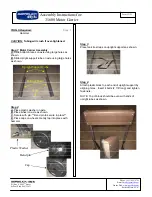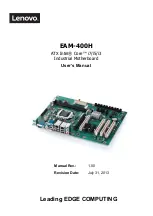
Chapter 5: Running Setup
5-5
not yet been tried for booting). If selected as No and all selected boot
devices failed to boot, the BIOS will not try to boot from the other boot
devices which may be present but not selected as boot devices in setup.
Initial Display Mode
This option determines the screen that the POST will display first. The
settings for this option are BIOS or Silent. If selected as BIOS, the POST
will start with the normal sign-on message screen. If Silent is selected,
the POST will start with a silent scree
n.
Display Mode at Add-on ROM Init
This option determines the display mode during add-on ROM (except for
Video add-on ROM) initialization. The settings for this option are Force
BIOS or Keep Current. If selected as Force BIOS, the POST will force
the display to be changed to BIOS mode before giving control to any add-
on ROM. If no add-on ROM is found, then the current display mode will
remain unchanged even if this setup question is selected as Force BIOS.
If selected as Keep Current, then the current display mode will remain
unchanged.
Floppy Access Control
The settings for this option are Read-Write or Read-Only.
Hard Disk Access Control
The settings for this option are Read-Write or Read-Only.
S.M.A.R.T. for Hard Disks
S.M.A.R.T. (Self-Monitoring, Analysis and Reporting Technology) is a
technology developed to manage the reliability of hard disks by predicting
future device failures. The hard disk must be S.M.A.R.T. capable. The
settings for this option are Disabled or Enabled. *Note: S.M.A.R.T.
cannot predict all future device failures. S.M.A.R.T. should be
used as a warning tool, not as a tool to predict device reliability.
Boot Up Num-Lock
The settings for this option are On or Off. When this option is set to On,
the BIOS turns on the Num Lock key when the system is powered on.
This will enable the end user to use the number keys on the numeric
keypad.
PS/2 Mouse Support
The settings for this option are Enabled or Disabled. When this option
is set to Enabled, AMIBIOS supports a PS/2-type mouse.
Summary of Contents for SUPER P6DGH
Page 1: ...SUPER P6DGH USER S AND BIOS MANUAL Revision 1 0 SUPER...
Page 14: ...1 4 SUPER P6DGH User s Manual SUPER P6DGH Figure 1 1 SUPER P6DGH Motherboard Image...
Page 33: ...2 6 SUPER P6DGH User s Manual Figure 2 6 Installing a Slot 1 Processor...















































